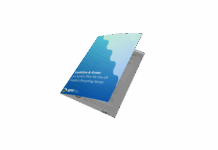PACKAGING compliance scheme Valpak is to participate in an expedition to clean up 10 tonnes of plastic on an uninhabited Pacific island ‘littered’ with plastic waste.
Henderson Island, which is part of the Pitcairn group, is a UNESCO World Heritage site located between Peru and New Zealand. Up to 13,500 pieces of plastic litter are said to wash up every day.
James Beard, recycling services manager at Valpak, will be part of a 13-strong team which departs in June, spending four weeks in the Pitcairn Islands. The aim is to clear plastic from the beaches, monitor the impact of litter on local wildlife, and provide scientific data on the rate of plastic accumulation.
He said, “Henderson Island plays a unique role in showing the scale of the marine litter problem. Despite its isolation, it is estimated to contain 38 million pieces of plastic litter which have been swept into the South Pacific Gyre.
“It goes far beyond cleaning the beach, everything will be logged. We will be using bar code scanners to try to identify the source of the plastic pollution and Mandy Barker, the artist who is joining us, plans to photograph everything which is collected. We are also working to transform the waste plastic locally into a useful product.”
The expedition has been made possible by a range of partners including global research and public policy organisation the Pew Charitable Trusts; the Pitcairn Island Government; and the UK’s Blue Belt Programme. International specialists Dr Jennifer Lavers and Dr Alex Bond will be leading the science team.
James Beard added, “Plastic has become a cornerstone of our society because it is so versatile. However, it is also viewed as a cheap commodity, when it should be treated as something that is unique. Stopping plastic from entering the oceans is key, because once it starts breaking down into microplastics, cleaning it becomes much, much more difficult.
“The scale of the problem in such a remote location as Henderson Island helps to demonstrate that plastic litter is a global challenge. It is true to say that only a fraction of the plastics in the world’s oceans originate from the UK, we still need to consider our responsibility. Designing plastic for recycling is the first step. We expect the litter on Henderson to have returned within six years; only a sea change in the way people use plastics will prevent this from happening.”














